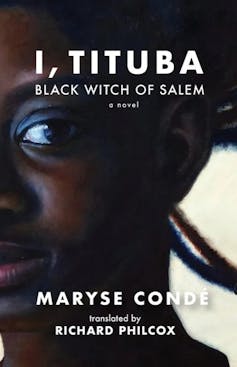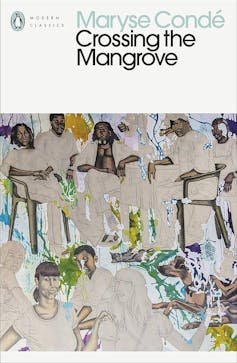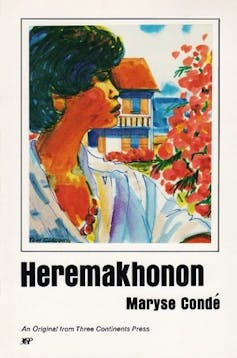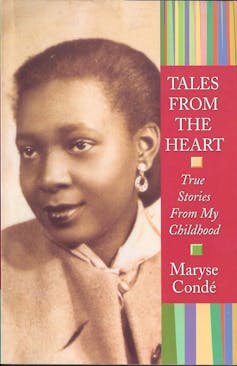Guadeloupian creator Maryse Condé, who has died aged 90, left a physique of labor which includes many deeply nuanced and wide-ranging responses to the centuries of normally violent contact between cultures and societies.
Take her bestselling pair of historic novels A mix (1984) and The Kids of Segu (1985). Set in an early Nineteenth-century royal courtroom docket in what’s now Mali, these books explored the profound modifications delivered to a extraordinarily difficult society by the slave commerce, the arrivals of Islam after which Christianity, and European colonialism.
Condé’s work always challenged simple choices to difficult points. It drew upon the intersections of sophistication, ethnicity, gender, origins and race, and the myriad competing perceptions of social standing that sought to establish a basis in any of these.
Condé’s startling work gained her The New Academy Prize in Literatureusually often known as “the selection Nobel prize”, in 2018, amongst many alternative awards. It is exhausting to resolve on which of her books are amongst her best, so listed beneath are 5 which resonate with plenty of our current debates about id, memory and our troubled shared histories.
1. Tituba, Black Witch of Salem) (translated by Richard Philcox)

Faculty of Virginia Press
Her 1986 novel I, Tituba witch… Black of Salem(revealed in English as Tituba, Black Witch of Salem with a foreword by American feminist activist and thinker Angela Davis) is taken under consideration by some to be the perfect novels about slavery, vitality and perceptions of witchcraft.
The story attracts partially upon what stays inside the historic doc of a youthful girl often known as Tituba, who was purchased into slavery inside the Caribbean after which North America inside the late seventeenth century. Tituba was among the many many first women to be accused of witchcraft in the midst of the Salem witch trials.
Condé crafts a richly imagined life for Tituba, setting the first half of the e-book inside the brutal violence of the slave financial system in Barbados. The second half is prepared in Boston and Salem, the place a further insidious violence is politely buried beneath layers of hypocrisy sooner than exploding inside the Salem persecutions.
Condé’s novel speaks powerfully to the divisive legacies of slavery and colonialism, along with to the rising consciousness that what counts as “knowledge” – inside the novel, versus “witchcraft” – has not been decided equally.
2. Crossing the Mangrove (translated by Richard Philcox)

Penguin Classics
The complexity of Caribbean id is on the coronary coronary heart of Crossing the Mangrove (1989) Each chapter is narrated by a definite character as they attend the night-long wake of the mysterious Francis Sancher.
On this temporary novel, the rich number of this one small group is prepared out, with class, coloration, coaching, gender, historic previous and political dedication all having fun with a component inside the characters’ concepts of the deceased Sancher, of themselves, and of each other.
Secrets and techniques and strategies, blind spots, lies and prejudices emerge over the course of the night time time. Some will seemingly be revealed to the group, nonetheless some are solely clear to the reader. Condé portrays the rich number of Caribbean society, alongside the widespread experience of loss and grief.
Some have linked the title to Lord Alfred Tennyson’s poem Crossing the Bar (1889), which is interpreted by some as an elegy about passing into the afterlife. Others have pointed to the problem of transferring by the use of a mangrove, with its multidirectional roots, which might presumably be seen as a metaphor for the complexity of id.
3. Heremakhonon (translated by Richard Philcox)

Three Continents Press
Condé moreover explored the idea of roots in her first novel, Areas (1976), a novel that traces the itinerary of a youthful black Guadeloupian girl who absorbed the lesson every from her family and from the French coaching system that she was “French”.
However when she arrives in Paris to proceed her analysis, she is instructed she is mainly African, and will go there to hunt out her real roots. She does so, solely to be instructed she won’t be truly African, nonetheless Caribbean.
Condé writes with verve and a considerable quantity of acute social critique, pointing to what happens to an individual when their id is dragged into grand theoretical ideas of any stripe.
4. Tales From the Coronary coronary heart: True Tales From My Childhood (translated by Richard Philcox)

Soho Press
Condé returned to these themes in various of her autobiographical texts, considerably The heart to snort and cry: reminiscences of my childhood (2001), revealed in English in as Tales From the Coronary coronary heart: True Tales From My Childhood . She describes her childhood in a comfortable middle-class Guadeloupian family and her gradual political awakening to what her brother calls “alienation”.
Inside the e-book she writes of how her dad and mother fetishise and impose on their youngsters a certain fantasy mannequin of metropolitan white French custom. They disdain Guadeloupian custom, the Créole language and any connection to a Black id.
In course of the highest of the e-book, the teenage Condé realises “I was a ‘black pores and pores and skin, white masks’ and Frantz Fanon was going to jot down a e-book with me in ideas”. Proper right here Condé references the seminal textual content material, Black Pores and pores and skin, White Masksby the Martinican theorist and psychiatrist Frantz Fanon, which explored the implications of colonialism and racism on the psyche, and the experiences of people of coloration in a white-dominated world.
5. The Journey of a Caribbean Creator (translated by Richard Philcox)
Thought-about one in all Condé’s remaining books, The Journey of a Caribbean Creator (2014), collects a number of of her lectures and essays, along with two beforehand unpublished texts.
It gathers plenty of her concepts on the relationships between the Caribbean and Africa; the home the sociologist Paul Gilroy often known as the Black Atlantic. This describes the mixing of black cultures with totally different cultures from throughout the Atlantic; diaspora and globalisation; and the happenstance of the areas we’re born and the languages and cultures we inherit and encounter.
This e-book alone is a worthy introduction to the work of among the difficult, most reliable, and however most taking part and hopeful of newest thinkers.
